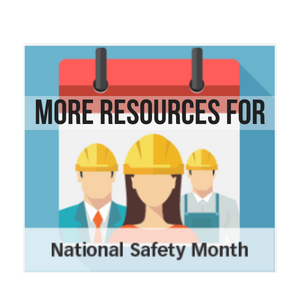June is National Safety Month, an observance organized by the National Safety Council (NSC) with the goal of raising awareness of the leading causes of injury and death both on and off the job. For Week 2, the NSC is focusing on wellness, which includes fatigue, substance abuse, and other issues affecting worker health on the job and at home.

A Widespread Hazard
According to the NSC, substance use disorders directly affect almost 8 percent of the adult and adolescent population in the United States—and three-quarters of those who struggle with addiction are employed. The Centers for Disease Control and Prevention (CDC) reports that unintentional poisoning, which includes drug overdose, was the leading cause of accidental deaths in the United States in 2016, ahead of motor vehicle accidents.
On the job, the highest rates of substance use disorders occur in the construction and entertainment, recreation, and food service industries. According to Tenet Diagnostics, up to 20 percent of work-related fatality victims test positive for drugs or alcohol, and 40 percent of all industrial workplace fatalities are caused by substance abusers.
The issue of substance use on the job is further complicated by the ongoing opioid epidemic, as well as by the legalization of marijuana for medical and/or recreational purposes in many states. Even over-the-counter and legally prescribed medications that are used as directed can create a safety hazard if they cause drowsiness or other potentially hazardous side effects. When substances are misused, the risk increases further. Therefore, employers are advised to develop clear policies that address the hazards of substance use on the job and communicate the company’s expectations surrounding drug and alcohol use in the workplace.
Direct and Indirect Costs
Substance abuse imposes both direct and indirect costs on employers in the forms of absenteeism, healthcare expenses, lost productivity, higher turnover, a higher risk for accidents and injuries on the job, and numerous other factors. As part of its National Safety Month offerings, the NSC has collaborated with Shatterproof, a national nonprofit organization, and NORC at the University of Chicago, an independent research institution, to create an interactive calculator that estimates the costs of substance use for a given employer based on its location, size, and industry. For example, a hypothetical Connecticut-based company with 200 employees in the information and communications industry is projected to spend $177,642 annually: $76,980 in lost time, $81,380 in job turnover and retraining, and $19,292 in healthcare costs for an estimated 20 employees struggling with substance dependence.
The NSC urges employers to take steps to control these costs by investing in employee wellness and offering treatment options for substance use disorders. According to the organization, each employee who recovers from a substance use disorder saves a company more than $3,200 per year; however, currently, only 1 in 10 people in the United States with a substance use disorder obtains treatment. Shatterproof recommends that workplaces implement programs that include five key elements:
- A clear written policy
- Employee education focused on stigma reduction
- Supervisor training
- Employee support programs and access to evidence-based treatment
- Drug testing
More Information
For more information on substance abuse in the workplace, refer to the following resources from Safety.BLR.com®:
- Infographic: Post-accident drug testing
- Safety 2017: Medical marijuana and workplace safety
- Toolbox Talk: Substance Abuse in the Workplace
- Poster: Prevent Prescription Drug Abuse
Not a Safety.BLR.com subscriber? Visit the site today and take advantage of all that it has to offer!

